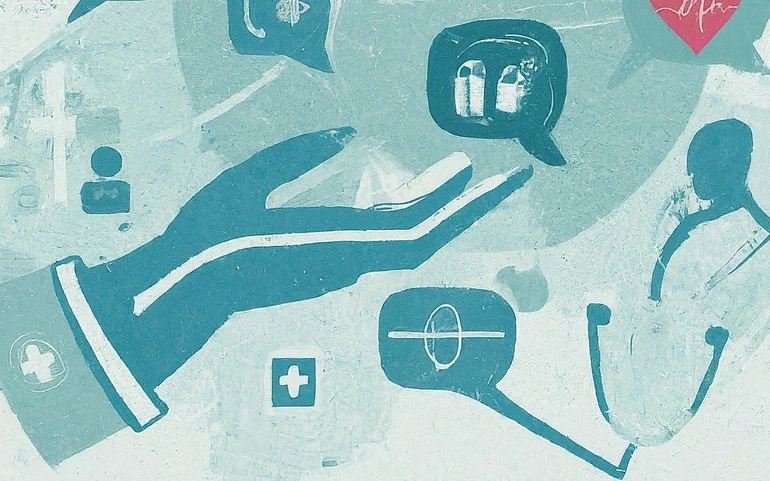What is Character AI and is it Safe to Use?
Modern Healthcare Diagnostic Testing & Monitoring

It Isn't Just For Patients Anymore.
Optimizing the communication and collaboration environment that underpins hospitals and healthcare systems is essential in today’s world. Testing and monitoring are the only way to accomplish that.
Going To The Doctor
I can easily remember my visits to the pediatrician’s office as a child many decades ago. I, like most children, was afraid of having to deal with ‘getting a shot’ where I definitely didn’t want one. However, that panic aside, the elements that stayed with me after all these years include a beautiful fish-tank in their waiting room with a sign that read “Don’t tap on the glass, it can frighten the fish, and fish doctors are harder to find than fishy ones.” I can also remember the nurses giving me lollipops if I didn’t cry during the visit (something my nearby dentist was very unhappy about.) Very little had changed about getting help from a doctor over the decades (with the possible exception of the disappearance of house calls…and lollipops) until very recently. The most significant changes in the US health industry involved how we pay for services, not those actual medical services. Recently however, the healthcare industry and process have been completely changed by the widespread use of Telehealth or Telemedicine services that have forever changed the way the general public interacts with healthcare professionals. Getting the technology involved to be reliable and easy to use is now far more important to healthcare providers than the waiting-room fish tanks and lollipops of years past. Robust monitoring of the entire UC&C ecosystem is now as necessary to the healthcare system as health insurance is to the patients.
Why Now? The Pandemic Accelerates Telehealth
During the COVID-19 pandemic doctors prioritized preventing the spread of the virus over their prior concerns about the liability and insurance issues with telehealth services. The shift underscored the urgency of public health, emphasizing the need to safeguard patients and the healthcare professionals themselves. This change in perspective reflected a broader societal awareness of the interconnectedness of public health and individual well-being. At that time telehealth calling in the US went from nearly zero percent to almost ten percent.
Patients discovered that accessing healthcare became more convenient through audio and video consultations than traditional office visits. The cumbersome process of scheduling initial appointments, visiting a doctor's office for issue classification, and subsequently scheduling any required tests or procedures could now be streamlined with a simple video call. This transformation not only saved time (often measured in saved days or weeks) but also reduced the physical presence required for preliminary assessments, contributing to a more efficient healthcare system. (I can – and in fact did – see my specialist over video about back pain, and he scheduled me for an MRI the following week. That was one week to get a diagnostic test, instead of first waiting two weeks to get an in-office visit with my specialist, having to sit in a waiting room and potentially catch some virus from other patients, having an in-person conversation with him, and then waiting a subsequent week for the MRI.)
Remote diagnosis and prescriptions became commonplace during the pandemic and remain commonplace today, especially for common illnesses. Patients can receive diagnoses remotely, with prescriptions sent directly to pharmacies, expediting relief and vastly limiting exposure. This advancement not only improved the patient experience but also showcased the potential for telemedicine to streamline healthcare services and make them more accessible.
Data shows that these telemedicine services are still growing exponentially. For one example, [ii]Kaiser Permanente members in Virginia, Maryland, and Washington, DC, can access a 24/7 video health center that connects them with a doctor who can quickly assess the problem and offer guidance. If the doctor determines that the problem is life-threatening the patient can be immediately directed to the ER, with the relevant medical information sent ahead to reduce the risk of complications. But telehealth physicians themselves can solve the problem some 60% of the time. And when a patient needs follow-up care, they can schedule an appointment with his personal physician and communicate relevant details ahead of the visit. This application of virtual care not only addresses medical problems immediately and around the clock; it also prevents unnecessary ER visits that can lead to inappropriate hospital admissions and thousands of dollars in unnecessary expenses per patient.
The Urgency Of Stable And Reliable Communications Ecosystems In Healthcare Organizations
Establishing a robust and reliable video and audio calling ecosystem within healthcare organizations is an absolute requirement nowadays for the seamless functioning of internal operations and the delivery of effective telehealth services. The absence of a well-maintained system can result in a cascade of issues that can significantly impact both the efficiency of internal processes and the quality of patient care.
Inside healthcare organizations themselves, video and audio calls play a crucial role in fostering teamwork, facilitating virtual meetings, and ensuring smooth collaboration among staff members. Picture a scenario where internal communication encounters frequent interruptions or struggles with less-than-ideal audio and video quality. This might result in misunderstandings, delays in decision-making, and even errors in patient care. To illustrate, consider a virtual health-care board meeting where specialists come together to analyze intricate cases. If the connection isn't up to par, it could hinder the seamless exchange and interpretation of medical imaging, potentially impacting the quality of treatment decisions. It's imperative to ensure that communication channels are always primed for top-notch collaboration and patient care
This is borne-out by research as well. In a 2022 survey by HIMSS[iii], the most common challenges employees identified when using collaboration tools in healthcare included the inability to integrate collaboration into other workflows (38%) and poor call and video quality (30%.)
In the realm of telehealth services, where communication bridges the gap between physicians and patients, the impact of an unmonitored and/or unreliable video calling platform becomes increasingly apparent. As patients embrace virtual consultations for their healthcare needs, any shortcomings in the video and audio calling system can significantly affect their experience. Imagine a scenario where a patient seeks a virtual follow-up appointment for a health issue. If the video connection keeps dropping or the audio quality is lacking, it may lead to misunderstandings regarding the patient's symptoms or treatment progress. These issues not only hinder effective communication between healthcare providers and patients but may also result in the mismanagement of the patient’s condition, ultimately leading to poorer health outcomes. Even when the patient's healthcare isn't directly compromised by communication issues, the perception of the provider organization as unreliable due to call instability can prompt patients to seek care elsewhere or disregard advice, equating call unreliability with general unreliability of the treatment plan.
Monitoring UC&C Ecosystems Is Essential
The hybrid nature of the different platforms in today’s Unified Communication ecosystems presents a challenge that healthcare organizations may not be aware of. If monitoring is being provided directly by one or more of the platforms in use, problems that exist between platforms (including Zoom, Microsoft Teams, Webex, Google Meet and others) and between other elements of the ecosystem (like SBCs or other network devices) may go undetected. This can create a highly dangerous state where organizations think they have proactive monitoring in place, but they can’t actually see the potential cross-platform issues – which may result in the proverbial ‘ticking-time-bomb’.
Unified communications and collaboration platforms and ecosystems – in both internal healthcare and healthcare to patient communications – form the backbone that these essential processes rely upon. As hybrid working becomes the norm in all industries, and the demand for a seamless user experience increases, the need for high up-time, fast problem resolution, and intelligent insight has never been more critical. If a robust UC&C, cross-platform monitoring system is not in place, the results could be wasted time, wasted expenses, and poor patient care – all service and reputation killers in the healthcare industry.
So, as I explained at the very beginning of this blog, optimizing the communication and collaboration environment that underpins healthcare organizations is essential in today’s world. Testing and monitoring are the only ways to accomplish that. If you’re not monitoring your critical collaboration systems, your organizations might as well have those “fishy doctors” my pediatrician mentioned decades ago.
+++++++++++++++++++++++++++++++++++++++++++++++++
I've written an entire whitepaper on this subject, click here to download it.
+++++++++++++++++++++++++++++++++++++++++++++++++
[ii] Harvard Business Review – The Telehealth Era Is Just Beginning https://hbr.org/2022/05/the-telehealth-era-is-just-beginning
[iii] Hospitals and Health Systems in a Hybrid World https://www.ir.com/guides/hospitals-and-health-systems-in-a-hybrid-world



























